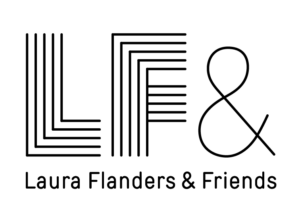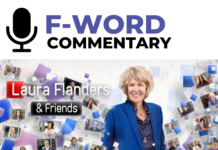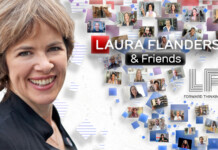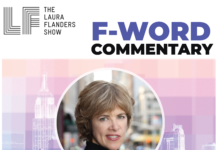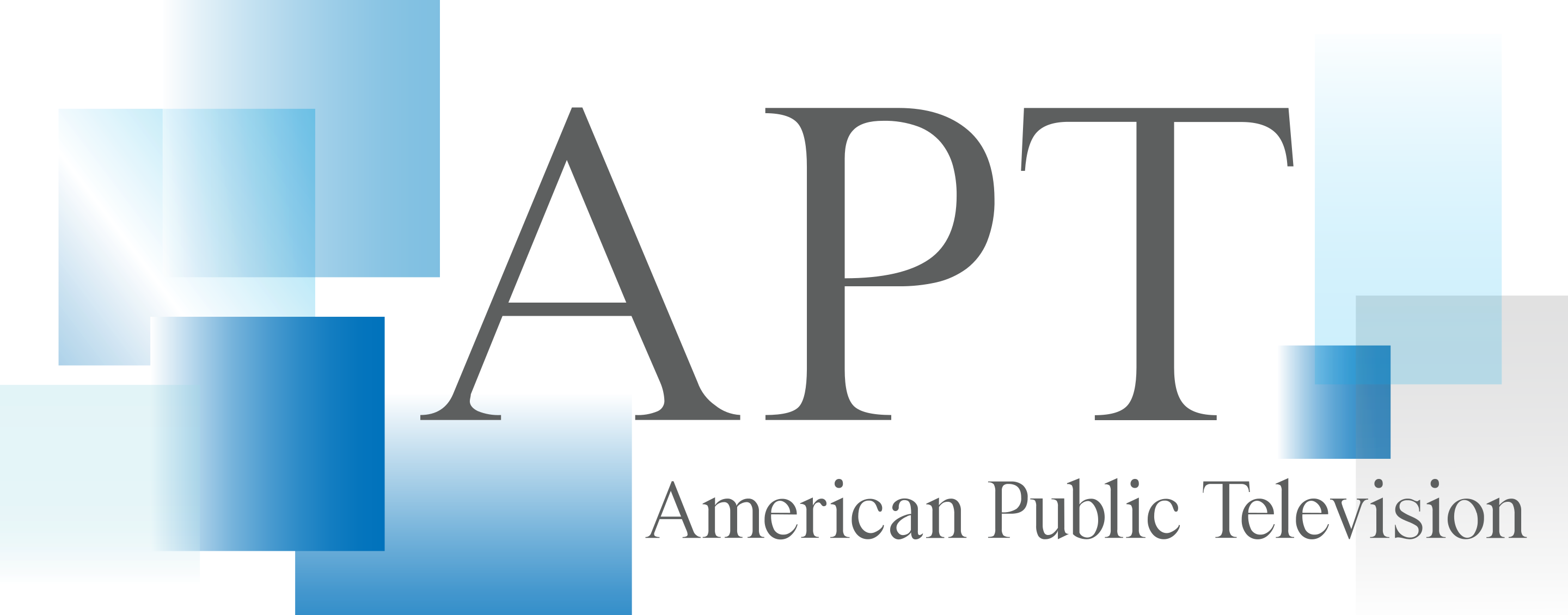It’s a new day, and the nation’s most trusted media institution has some new direction. Sylvia Bugg was named the Chief Programming Executive and General Manager of General Audience Programming in winter 2020. She will take on PBS’s programming strategy for broadcast to focus on PBS’ role as a provider in service of the people. PBS is currently facing criticism for a lack of diversity in content which Bugg acknowledges and insists, “PBS content should be reflective of the audiences that we serve’. Will Bugg’s leadership address the need for more inclusive programming and how will Congress budget their values when it comes to PBS’ future? Investing in public media as a public good could signal a new day for PBS’s future.
Guests
- Sylvia Bugg is the PBS Chief Programming Executive and General Manager of General Audience Programming.
To listen to the uncut interviews, and to get episode notes for this episode and more, become a Patreon partner here.
(Re)watch this week’s live talk-back with guests Yoruba Richen and Grace Lee. Join us on YouTube for a live viewing event and chat with Laura and guests every Sunday, starting at 11:30am ET.
Prefer to Listen?
Transcript
A New Day for Public Television?
– Sylvia Bugg: I grew up watching PBS and without it, I don’t think I would have been exposed to all of what I learned.
I like to think of us as yes, providing content but also being a service provider.
We have a history of inclusive programming, however, we do recognize that there is more work we all can do.
PBS’s content should be reflective of the audiences that we serve.
– Laura Flanders: Still coming up on “The Laura Flanders Show,” the place where the people who say it can’t be done take a backseat to the people who are doing it, welcome.
Imagine a source of news, music, cooking classes, and kids shows, a kind of media platform that wasn’t there to sell you something, steal your data, or track what you observe. A channel free of political bias mostly, and mostly free of ads, a channel set up in the public interest and subsidized by Congress. You might call such a service, Public Broadcasting. And since 1967, the US has actually had such a thing, the Public Broadcasting Service or PBS. Is it a great idea whose time has come and gone? Audiences are moving online. And this March a large group of filmmakers of color called PBS out for a lack of diversity. The year of the great pandemic shut-in could have been a chance for public television to shine, did it? Walking into this morass of important questions is today’s guest, longtime PBS executive Sylvia Bugg. She was promoted to Chief Programming Executive and General Manager of General Audience Programming, last October. We are thankful for her service and honored to have her with us today. Sylvia, thank you so much. The length of your title indicates its importance. So I just want you to explain what your responsibilities are and I’ll put my cards on the table. Do I need to be scared that you can boot me off of this program if I ask the wrong kind of question?
– Sylvia Bugg: Laura, I would never do that. I’m supposed to be on with you today, and I’ve actually been looking forward to it. So yes, Sylvia Bugg, Chief Programming Executive and General Manager of General Audience Programming for PBS and in all of that, what matters, the difference is general audience programming. So my team oversees all of the content strategy for primetime programming, non children’s programming, so that’s another department, and so we really do look at all of our content for our primetime schedule, working with producers, working with PBS member stations, major producing stations, and an array of production companies to deliver great compelling content for the primetime schedule.
– Flanders: I want to congratulate you on “The Black Church” series, which launched I think it was roundabout Valentine’s day this year, you were involved and it was something to be proud of.
– Speaker: “The Black Church” has been these seminal force in shaping the history of the African-American people.
The history of “The Black Church” explorers the rich, complex, and nuance history of faith, since our ancestors arrived on these shores all the way to the 21st century.
The church gave people a sense of worthiness. I don’t know how we could have survived as a people without it.
To tell this story adequately, I turned to major leaders of the Black Church, and the major social figures in our country, including my friends, John legend and Oprah Winfrey, Yolanda Adams, Pastor Shirley Caesar, Kirk Franklin, and a host of scholars across the country.
– Bugg: So that actually had been in development for a while as you know, programming on PBS, particularly the multi-hours primetime programming, it takes a while. It takes a while to gather funding, it takes a while to get programs filmed, and of course, during a pandemic, just when you think you have a great engagement plan, COVID happens. And so there was a lot of shifting, but I think we’re all very proud of “The Black Church” that premiered with Dr. Henry Louis Gates, Jr. And it was just a special time, me growing up in the Black Church. It was especially personal and just a great time, I think for PBS to have content that really speaks to a wide variety of our audiences and just to see the outpouring of support in some of what we’ve were able to do in the engagement space with that particular mini series was just fantastic so thank you.
– Flanders: Well, let’s talk about that engagement space. You know as I mentioned, we’re in a moment and this will not come as news to anybody, of tremendous transition when it comes to media and engagement. It was shocking to me recently to talk to a woman in her 40s, a woman of means, white woman, grew up in Washington DC. And I mentioned Public Broadcasting to her. And she said, the image that came into her head was a black and white TV set with rabbit ear antennas. So help me, help me Sylvia, tell us why you care so much about public broadcast?
– Bugg: Because I’m a kid of the seventies. I grew up in rural Southern Virginia, during a time when we were lucky to get a good signal out of the Richmond, Virginia Market or further South out of the Durham, Raleigh, North Carolina Market. So we sit right in between those two areas. And so I grew up watching PBS and without it I don’t think I would have been exposed to all of what I learned thanks to PBS. And so fast forward, it is a unique opportunity for me to be able to come back to PBS. And this is my third tour at PBS, actually. So some people don’t know I was here in the nineties and I left and I came back. So this is my third time at PBS. And third time is always a charm. And so I do like to think of PBS content as a place where you can take that programming and it will last far beyond just a premiere, or just a night in the schedule. Some of the feedback that we got particularly during COVID was how stations and markets were able to use our content during at home virtual learning. So I like to think of it, of us as yes, providing content but also being a service provider.
– Flanders: Many PBS watches of a certain age have warm and fuzzy feelings about programs like “Sesame Street”.
– Speaker: Hi, we’re warming up for the biggest and best block party ever held on Sesame Street, and you’re invited so get ready.
– Flanders: “Reading Rainbow”
– Speaker: One of the best interventions ever was the book. A book lets you zoom through time and space but don’t bother packing, you can stay in one place.
– Flanders: And “Mister Rogers’ Neighborhood.”
– Speaker:♪ It’s a beautiful day in this neighborhood ♪ ♪ A beautiful day for a neighbor. ♪ ♪ Would be mine ♪ ♪ Could you be mine ♪
– Flanders: For decades PBS has brought the nation’s non-partisan news as well.
– Speaker: It is the temporary residence of the man who symbolizes the religious opposition to the Sheikh and who guides the movement to overthrow him.
– Flanders: Deep dives into history, culture, and science. PBS has in its time been an innovator, not only of programming from “Julia Child” to “Tongues Untied”.
– Speaker: I was mute, tongue tied, burdened by shadows and silence. Now I speak.
– Flanders: But also to technology like descriptive captioning and pioneering digital broadcast. Along the way, it has often had to fight for its own existence as Republicans from Reagan to Romney threatened to slash funding.
– Speaker: I like PBS, I love Big Bird. I actually like you too, but I’m not gonna keep on spending money on things to borrow money from China to pay for it.
– Speaker: And then when the money ran out, people in Boston and Pittsburgh and Chicago all came to the floor and said we’ve got to have more of this neighborhood expression of care. This is what I give.
– Flanders: PBS has endured and remained in 2020 the most trusted public institution in America. All of that said, the programming service and the funders behind it, the corporation for Public Broadcasting have come under criticism many times, but most recently, this March when a long list of filmmakers of color, including several that have been on this program and several that make programming for PBS called PBS out for its over-reliance on one cis white hetero oldish guy Ken Burns for telling the story, all the stories of American history. I’m sure you share these concerns. What in your capacity are you actually gonna be doing to diversify who gets funded to tell our story?
– Bugg: That’s a great question, Laura, and thank you for bringing this up because I agree we have a strong foundation in PBS and public media. We have a history of inclusive programming. However, we do recognize that there is more work that we all can do, that we can do PBS specifically. And we welcome that dialogue on this important issue. So I feel like these conversations can be on two tracks. So one is to, of course, think of ways to and actually develop ways to bring more inclusive content into the pipeline. But I think we also need to look at what does the future look like in terms of insuring? And I’ve always said this that PBS’s content should be reflective of the audiences that we serve. With that, we have to look for more ways that we can bring in more funding because we know that PBS isn’t a single source. We know that CPB isn’t a single source. So we often have to go out for those limited dollars, either through philanthropic support or corporate support. So I’m excited in this role to be able to kickstart those conversations. And do it in a way that really ensures that we’re on a good path. We have a good framework for how we can think about not just, you know content, but also look at, you know those opportunities that we need to create to feed the talent pipeline of the next generation of makers from diverse backgrounds, including BIPOC makers. And then also look at what are those long long-term sustainability efforts that I think is incumbent for all of us to think about.
– Flanders: We’re a big believers in partnerships here. And one of the partnerships I’m excited about in the works here at The Laura Flanders Show is partnering with some of the extraordinary local media outlets that, you know, people talk about a crisis in journalism. I actually think there’s an extraordinarily exciting efflorescence of journalism happening, a lot in BIPOC people of color hands, but also at the local level, doing journalism in a whole different way. And when we can connect those journalists with our national platform, which is also in their backyard because we’re on that local station, I think we’re gonna see some exciting things. So stay tuned for that.
I want you to talk about digital. In order for you to become the network and the programmer for general audiences that you wanna be, you’ve already said, it can’t just be trying to get people to turn on the television sets. And in an interesting story, not long ago in the Columbia Journalism Review, you had Ellen Goodman, the longtime media critic and writer saying this is a perfect time for public broadcasting as a public service to be engaged in this sort of building of trust in the civil society of this country. But in order to do that, you have to shift from Public Broadcasting Service to a public media service. And how do you do that? And then how do you do that without increased congressional, which is to say macro federal support.
– Bugg: It is the one thing that I think about most often along with everything that you’ve referenced in terms of thinking about a digital transformation, it’s also an education, right. So we have to say no longer are we just focused on overnight broadcast numbers and that part of the metrics, we really need to think about this holistically. So I will tell you a funny story. I have two nephews who are in their early mid 20s, and I had an extra TV lying around and I said, hey guys do you want this extra TV that I have, I don’t need it? And they said, no, we don’t need a TV because we use our phone, we use the laptops that you brought us, when they were in college, and they use their iPads to consume content. So it is not to say that we abandon what we do in terms of a content focus on linear broadcast, but we need to look at, and I’m using one of my colleagues phrases, a spherical approach where content and audience is really in the middle of this experience that PBS will take them through, but we can find ways to customize that content for my nephews. They grew up in the black church. So I said, hey, I know they’re not gonna watch PBS broadcast but they sure enough tuned in to Facebook, they tuned into some of the other platforms either PBS owned or third-party platforms that we partner with to experience, for example, “The Black Church”. And so there is the, what I call the bread and butter of PBS content that will remain consistent and constant. But I think in this mass media ecosystem, there is a pretty vast opportunity for us to look at some of these digital opportunities for growth across our content strategy.
– Flanders: What do they have in common that makes it public broadcasting? What’s the public part?
– Bugg: If you watch PBS, you know that Wednesday nights is science. Sunday nights is drama. Monday nights, you’re gonna get certain content. Friday night, you might get over to news and public affairs content baked in with some arts content. But what are those sub same categories, where we can say this is a theme or thread of content that is relevant, that’s timely, that really does reflect many of the conversations that are not only being had in some ways globally and nationally, but what are you talking to your neighbors about in your local community? What do you get together at dinner time with your family and talk about in terms of those issues of the moment, that we can really think about providing content opportunities in ways that hopefully we can bring in a younger audience. In my mind, I’ve been thinking about, during this time of COVID, there’s been amazing resiliency from artists, and what more can we do to highlight arts during COVID? I think climate and the environment is another example that we’ve really been leaning into a solutions based storytelling approach. So I think there’s a lot of opportunity there for PBS to maintain its core content that will continue to serve our core audiences. And I’m excited about that content as well as how can we lean more into issues that have become a part of our everyday life and existence, and some are painful and challenging, but I think that’s where the S in PBS comes in, in terms of being a service.
– Flanders: There are programmers as all across the country. I know several who work at CBS and Channel One in New York who would say the same kind of thing as you’re saying about what they want to put on the air, but there is something different about the structure of Public Broadcasting, which is to say it’s not broken up every 10 minutes by advertising, although there are increasingly long underwriting statements. What makes it structurally, institutionally different? And the reason this is so important is it speaks to our moment politically with the new administration talking about infrastructure and rebuilding community wealth and broadband. And I keep saying community media is part of community wealth, and how come they don’t talk about media, meaning things like PBS, when they’re talking about rebuilding infrastructure. Structurally, we’ve had fights every generation to fight for resources, public broadcasting and television and radio and cable. But in the current year, we haven’t really had this fight beyond that neutrality, which was super important, but not about public commercial free space for communication.
– Bugg: Yeah, and I think those are all very important points. And I would just say from, again, sort of a content perspective, when we talk about these public and open spaces, it is such that we don’t avoid some of those challenging conversations, and so, for example, I’m interested in how PBS can be a service to present this national content, but also in a way that we can bring in our local stations and their perspectives. I was speaking to a station general manager a few months ago about some of the work that she’s doing to help bridge divides in her communities particularly following the election. So we started to think about democracy, how we define democracy depending on who you are in your backgrounds can be very different. And so just because right, you turn a page on a calendar, it doesn’t mean that these important issues that should be a part of the public discussion and dialogue go away. And so I think that is one of the unique values that we can have in PBS and public media is we don’t do the pin drop or the popcorn and then we’d move on to the next issue. For us, it’s really about how we can embed some of these themes and topics. So we’ve been talking about democracy, and how do we translate that into content that is not didactic, that is not everything we’ve seen before. So really for me the big question is, why this content, and why now? And so I think when we have to look at the total dynamic of the service that we offer, we have to constantly ask ourselves that question, what continues to keep us relevant? And it’s not a one size fits all so to the extent that we can really, really answer that question, and we pose it to our producer. So you have this idea for a show, why now? And really try to query that and go a bit deeper into the producers to find out, you know, what is the thing that moves them about this particular project? And then we work to find how we can make those connections into our local markets and communities, and hopefully in a way, it can help to further drive their value as well, and us to continue to be able to provide these content and services because it is a membership organization. So we’re absolutely here to serve our local stations.
– Flanders: And what difference that makes to programmers for those of you who are watching or listening out there is, what was brought home to me very starkly recently when I was watching my local cable news, and the entire discussion around vaccinations and different companies with different vaccines was interspersed with advertising from big pharmaceutical corporations, which made you kind of think well, what’s, you know these are sometimes we’re getting kind of mixed messages. And here on public television, I felt that this was the only place, for example, that our show could have a discussion with a scientist and an economist who says, you know, really we need to have publicly owned patents of vaccines. Big pharmaceuticals owning these patents is a problem. And it occurred to me, I wonder if I’d even be able to really have that conversation at least in any kind of serious way on a program that was funded by big pharma.
That does come back to your funding source. And I know you’re the programming source not the funding source. But you mentioned members, do you have a DC strategy right now to increase the funding for the system? And what is your kind of pledge to members, vis-a-vis the publicness, the commercial freeness of this network?
– Bugg: Part of our funding is public funding through the corporation. And I used to work at the corporation for Public Broadcasting. So I have some knowledge of how those funds are just so important and critical for the work that we do across the public media system, not just on the content side, but also on services and the health of the system of the public media system. So I think for us, it’s always thinking about what those unique and dynamic models are. And I will say Laura, I feel like, into some extent, even now, but after last summer and all of the challenges that we had around the murder of George Floyd, I felt like corporations and major organizations, and we were all talking about racial inequities and what is it that we need to do to help to further support some of that work that was happening, is continuing to happen across countries, communities in the country. And so in my mind, I was thinking, this is an opportunity for us to look at even our partnership, and you talked about some of your partnerships, but to look at that model and that structure as a way that we can go out and further expand our fundraising opportunities and models in ways that, to find natural touchpoints for funding support, we can’t just rely on one single source. It’s always been that way. And I think it will continue to be an area for us to focus on. So if I can continue to do that part on the content side to provide this content, that we can make a case for the value, for the support. That’s my focus and what I’m encouraged that we can accomplish that, we can do for the future. So here’s to the next 50 years of PBS.
– Laura Flanders: Non-invasive, not-for-profit, and did I mention free? If ever there was a time to appreciate public media, this is surely that time. The COVID-19 pandemic has shown us that there is a lot to be said for our public institutions, be there libraries or post offices, public hospitals, or schools. They may not be perfect, but they were there when we needed them. And for millions of Americans shut up at home without access to streaming internet or schools, American broadcasting was there for them too and their kids. Don’t get me wrong, newsrooms all across the country, especially the locally and family-owned newsrooms have long needed a stimulus. Give us tax breaks for subscribing a new journalism jobs program, allow not-for-profit reporters, especially women and people of color to be part of AmeriCorps and forgive their student loans. Congress is currently considering bills that would address all of this, but when it comes to America’s public media system, we don’t need a bailout, we need a buy-in for the very first time. All across the world, wealthy nations like ours, contribute $100 ahead to public media of different kinds. We barely contribute a dollar a person, and look where that’s brought us, here. You can complain all you like about snake oil salesmen and spies messing with your news and your neighbor’s heads. But really the only alternative to a media that is driven for profit and power is one driven for the public interest instead. And that requires investment by the public purse. The last time we made an investment like that, was in the time of LBJ or before that FDR. So while we’re talking about all sorts of new, new deals for other public goods, let’s have a new, new deal for democracy by investing in our public media. I’m not talking about the politburo, I’m talking about PBS and NPR and what they would sound and look like if they and the independent producers who contribute to them, didn’t have to go begging for every dime. Let’s build back different and build our commitment to public media differently, invested by the public for the public and designed to stay that way. Thanks for joining me. I’m Laura for “The Laura Flanders Show”, till the next time, stay curious, stay kind.
For more on this episode and other forward thinking content and to tune in to our podcast, visit our website at lauraflanders.org. And follow us on social media @theLFshow.
Want More Media Coverage?
You can find more LF Show coverage of the media here.
Accessibility
The Laura Flanders Show is committed to making our programming, website and social media as accessible as possible to everyone, including those with visual, hearing, cognitive and motor impairments. We’re constantly working towards improving the accessibility of our content to ensure we provide equal access to all. If you would like to request accessibility-related assistance, report any accessibility problems, or request any information in accessible alternative formats, please contact us.
